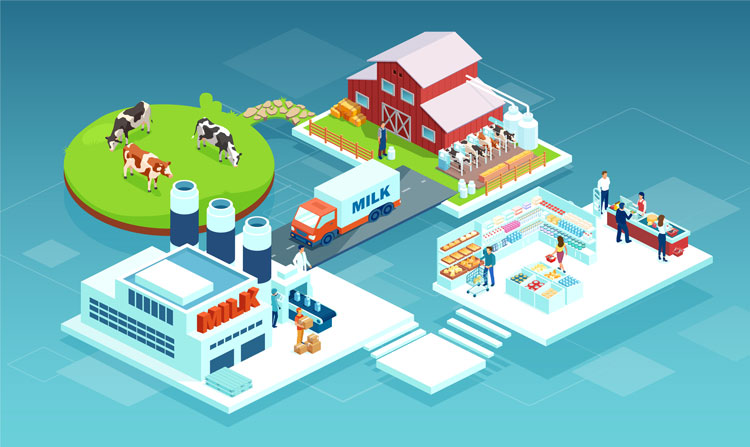
Just like dairy farmers and dairy retailers, dairy product processors have been forced to learn a lot over the past 13 months as they attempt to balance supply and demand. Maybe the biggest lesson has been the need for more regular contact with the entirety of the supply chain.
“This has been the year of talking. This was the year of communicating,” said John Umhoefer on the April 21 Hoard’s Dairyman DairyLivestream. Umhoefer, executive director of the Wisconsin Cheese Makers Association, said his members have reported stronger relationships with their distributors than ever before. Coordinating products coming in and going out on sometimes tight schedules created more transparency on both sides of the chain.
Although no one really knew what to expect next, the vast majority of processors were able to pivot quickly, move dairy products, and keep the people affected informed. No plan was perfect, but in an uncertain time, any knowledge was critical.
That has required a great deal of collaboration. “This was the year where we proved that dairy still is that industry where you help your neighbor,” Umhoefer said. “The processors found themselves low on ingredients, low on packaging, with extra milk sloshing around. They were sharing necessary tools, and they were sharing milk and looking for homes for that milk together. It was great to see. There were months of that, where the communication in the industry was unprecedented.”
On the farm
That transparency was seen not only from processors to retailers and distributors but from processors to producers. It was first communicated as milk buyers like co-ops implemented base excess plans once processors told them they had no more room for milk. Knowing if you had a market for your milk became a vital consideration in farm management decisions.
Will that continue to be a decision-making factor even as pandemic restrictions lift? It’s probably likely, especially as farms may consider expanding, Umhoefer and the University of Wisconsin-Madison’s Mark Stephenson agreed.
“Don’t just throw on another thousand cows and show up with the milk,” Stephenson said. You need to talk with your processor to confirm they can take that product and have a place to sell it. That applies to both direct-ship relationships or if you work through a co-op, he continued.
Umhoefer added that their processor members are making similar comments. “I think this is one of the things that will stick from COVID-19. That communication between the farm and the plant has to be more of a business discussion,” he said. “There always seemed to be room for product, back 10 or five years ago. But now, it’s all hand-to-mouth in this market. You don’t know what your distributor is going to tell you next week. You have to play this a little more carefully, and you have to work together.”
An ongoing series of events
The next broadcast of DairyLivestream will be on Wednesday, May 5 at 11 a.m. CDT. Each episode is designed for panelists to answer over 30 minutes of audience questions. If you haven’t joined a DairyLivestream broadcast yet, register here. Registering once registers you for all future events.








